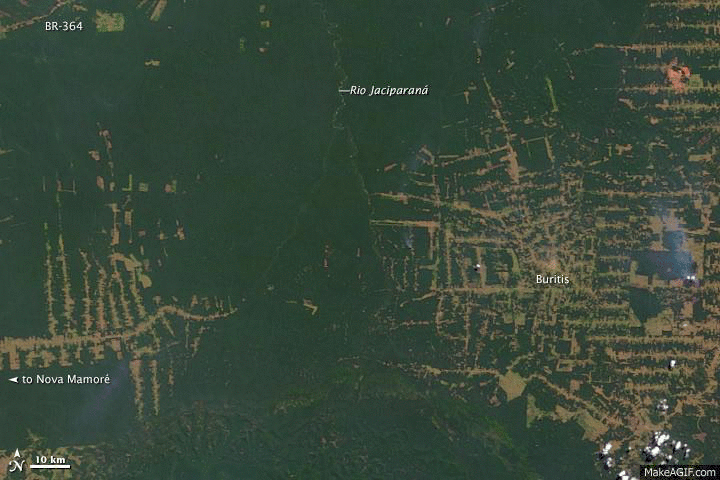The Best and Worst Places to Build More Roads
Road works today are “basically chaos”—but a new global road map could be key to protecting agriculture and nature
/https://tf-cmsv2-smithsonianmag-media.s3.amazonaws.com/filer/13/d5/13d55d81-518f-4c7d-9b35-51076d9e6be5/42-47725957.jpg)
Roads are taking over the planet. By the middle of this century, so many new roadways are expected to appear that their combined length would circle Earth more than 600 times. To build critical connections while preserving biodiversity, we need a global road map, scientists argue today in the journal Nature. And as a first step, the international team has identified areas where new roads would be most useful and those where such development would likely be in conflict with nature.
A road can be a vital link for people in faraway places, giving farmers, for instance, access to markets for their crops and letting them obtain fertilizers and other technology that makes growing more efficient. A cleverly placed road can even direct traffic away from environmentally vulnerable regions. But a poorly planned road can be devastating. Roads cutting through delicate ecosystems have been linked to deforestation, pollution, invasions of exotic species and wildfires. For wildlife, a road can create a barrier that may be deadly to cross, keeping animals away from food and potential mates, Or it can provide poachers with easy access to rare species.
Some 15.5 million miles of roads will be added to the planet’s surface by the year 2050, a 60 percent increase over what existed in 2010. And nine out of ten of those miles will be constructed in a developing country. In places like the United States, building a new thoroughfare requires planning and environmental evaluation, but many other regions have no such rules.
“The current situation is basically chaos, especially in many developing nations, which is where most new road building is occurring,” says study lead author William Laurance, a conservation biologist at James Cook University in Cairns, Australia, and a senior research associate at the Smithsonian Tropical Research Institute in Panama. “We desperately need a new approach—one that looks at roads in the larger global context and tries to make proactive decisions about where roads should and should not go.”

Laurance and his colleagues argue that roads could have the most benefit when they link agricultural areas to the rest of society, since global food demand is expected to double by the middle of this century. With that in mind, the researchers identified the regions of the world that are most suitable for intensifying agricultural production. These are largely areas that are warm for at least part of the year and have enough rainfall to grow crops. Then the team created a map of regions that would be best to preserve, such as those with high biodiversity, those important for carbon storage and protected areas like national parks.
By combining the two layers of data, the researchers created a “Global Road Map” that shows regions that should stay road-free, those where roads would be most useful and those where there is likely to be conflict between the competing interests of human development and protecting nature.
The Amazon, Siberia and southwest Africa were among the regions where further road building would be unwise, according to the maps. India, Africa just south of the Sahara, large swaths of land stretching from Eastern Europe west into Russia, and the central United States would be home to prime spots for new roads that would assist agriculture. Central America, Southeast Asia, Madagascar, Turkey and Spain, though, have a lot of area where the nations would have to weigh the needs of their populations with the desire to protect the land.
Many of the conflict areas are in poor countries, “and telling those countries not to build roads is hardly going to be popular,” Stephen Perz of the University of Florida, Gainesville, writes in an accompanying commentary. However, “a global road plan is not intended to ‘keep developing countries poor’, but rather to highlight the costs as well as the benefits of building roads,” he argues.
Laurance hopes his group can develop cooperative projects with development banks, international lenders and governments so that the new maps can help guide future road development. But roads are not just a planning issue, he notes. Even in regions where there are rules about road building, thoroughfares are often constructed illegally. Despite Brazil’s progress in combating deforestation and fires in the Amazon, “there’s still quite a lot of illegal road-building happening there,” Laurance says. Today, illegal roads outnumber legal ones by three to one.
“Nations have a strong vested interest in improving their frontier governance, because a lot of what's happening is illegal—essentially the theft of timber and other valuable resources, illegal mining, the illegal wildlife trade and the illicit trade and production of drugs,” he notes. Developing nations lose some $30 billion a year just from timber theft. “The loss of tax revenues and royalties is a huge hit on developing nations. …We need better road zoning and better enforcement of existing environmental laws.”
/https://tf-cmsv2-smithsonianmag-media.s3.amazonaws.com/accounts/headshot/Sarah-Zielinski-240.jpg)
/https://tf-cmsv2-smithsonianmag-media.s3.amazonaws.com/accounts/headshot/Sarah-Zielinski-240.jpg)